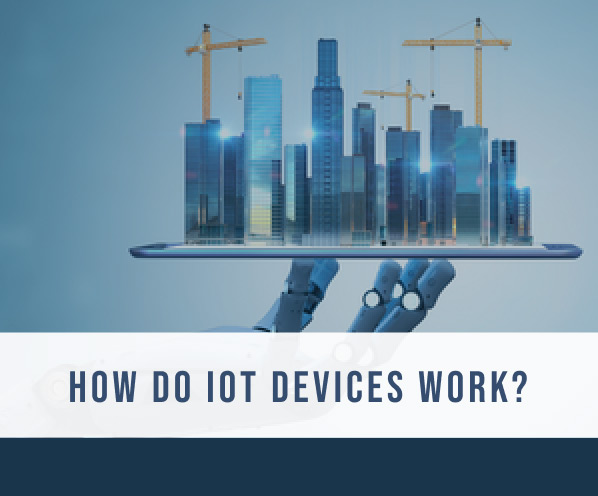
How IoT Works
Most IoT devices share a similar set of processes. The order of these steps isn’t necessarily fixed, but to a first approximation, this is a common data flow:
- Sense.
The IoT device filters information, gathering and processing relevant data. - Transport.
The device transmits this data to the Internet over networks, which may include Bluetooth, Wi-Fi, cellular, mesh radio, satellite, or fixed line connections like Ethernet. - Store.
Information from the IoT network is gathered and stored, most commonly in a company’s cloud database. - Analyze.
By processing the IoT data from a distributed network of devices, an individual or company extracts insights about the system as a whole and its constituent nodes. - Control.
Those insights affect the behavior of people, companies, and IoT devices, typically through the sharing of information or commands. - Share.
IoT data is exchanged with other systems, monetizing it or enriching it with third-party data.
Example of an IoT Device
Bird is an already popular consumer device that showcases the possible implementations of IoT technology.
Bird Scooter
A successful consumer IoT device, scooter rental company Bird was recently valued at over two billion dollars.
If a user wants to ride a Bird, they just download the app and find the nearest one. In many big cities, Birds are everywhere (so common that locals are getting annoyed). From Bird’s side, however, here’s how the process works:
- Sense.
Each Bird scooter has a sensor to measure battery level and knows its location through GPS. - Transport.
Through cellular networks, it passes that data back to Bird HQ. - Store.
Bird amalgamates all the information in its cloud… - Analyze.
… and therefore keeps tabs on all its scooters. - Control.
By knowing the status of each scooter, Bird can:- Remove an out-of-battery scooter from the map that its customers see
- Rally teams to collect and recharge scooters overnight
- Move scooter hubs from unused areas to more popular places
- Share.
Other transportation companies would value Bird’s information. Uber, for example, bought bike-sharing company Jump. They’d likely be interested in information on scooter usage, or perhaps even a partnership to achieve better horizontal integration.
Thinking Bigger
While a large part of Bird’s IoT benefit comes from knowing an object’s location, it also gains value from its battery’s IoT connection. What if Bird started adding other sensors?
If Bird installs an IoT thermometer, it could learn how temperature impacts scooter maintenance. Let’s say high temperatures can harm tires. Bird could implement an automatic program that offers local users ride credit for moving the scooter to the shade. While this example is just speculation, it shows the space of possibilities. What if Bird learned riders have more accidents on cold days? What if fluctuating temperatures require more frequent tire refills?
What if this same style of connectivity and sensing were applied to cars?
- Cities could learn about traffic patterns and implement better traffic flows.
- Temperature and humidity data could help car manufacturers improve their materials.
- Location and sensing data coupled with actuators creates self-driving cars, which could decrease traffic and save over one million lives over the course of 50 years. And this Internet of Vehicles is more than science fiction: by 2030, there is an expected 2.5 billion connections by IoT-enabled cars.




